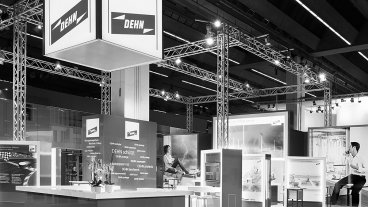Solutions for buildings
Surges - an underestimated risk
Direct and nearby lightning strikes
Direct or nearby lightning strikes are lightning strikes into a building, in its close proximity or in lines entering the building (e.g. low-voltage power supply system, telecommunication and data lines). The amplitude and energy content of the resulting impulse currents and impulse voltages as well as the associated electromagnetic field (LEMP) considerably threaten the system to be protected.
The lightning current resulting from a direct lightning strike into a building causes a rise in potential of several 100,000 volts on all earthed devices. Surges are caused by the voltage drop at the conventional earthing impedance and the resulting potential rise of the building with respect to the environment. This is the highest stress on electrical systems in buildings.
In addition to the voltage drop at the conventional earthing impedance, surges occur in the electrical installation of the building and in the connected systems and devices due to the induction effect of the lightning electromagnetic field. The energy of these induced surges and the resulting impulse currents are lower that that of the direct lightning impulse current.
Remote lightning strikes
Remote lightning strikes are lightning strikes far away from the object to be protected, in the medium-voltage overhead line network or in its close proximity as well as cloud-to-cloud discharge.
Switching operations
Switching operations of power utilities cause surges (SEMP - Switching Electromagnetic Pulse) of some 1,000 volts in electrical systems. They occur, for example, when inductive loads (e.g. transformers, reactors, motors) are switched off, arcs are ignited or fuses trip. If power supply and data lines are installed in parallel, sensitive systems may be interfered with or destroyed.
Protection of power supply and data systems
Destructive transients in residential, office and administration buildings and industrial plants are likely to occur in, for example, the power supply system, information technology system and telephone system, control systems of production facilities via the fieldbus and controllers of air-conditioning or lighting systems. These sensitive systems can only be protected by a comprehensive protection concept. In this context, the coordinated use of surge protective devices (lightning current and surge arresters) is paramount.
The function of lightning current arresters is to discharge high energies without destruction. They are installed as close as possible to the point where the electrical system enters the building. Surge arresters, in turn, protect terminal equipment. They are installed as close as possible to the equipment to be protected.
With its Red/Line product family for power supply systems and its Yellow/Line product family for data systems, DEHN offers harmonised surge protective devices. The modular portfolio allows cost-optimised implementation of protection concepts for all building types and installation sizes.
More information:







